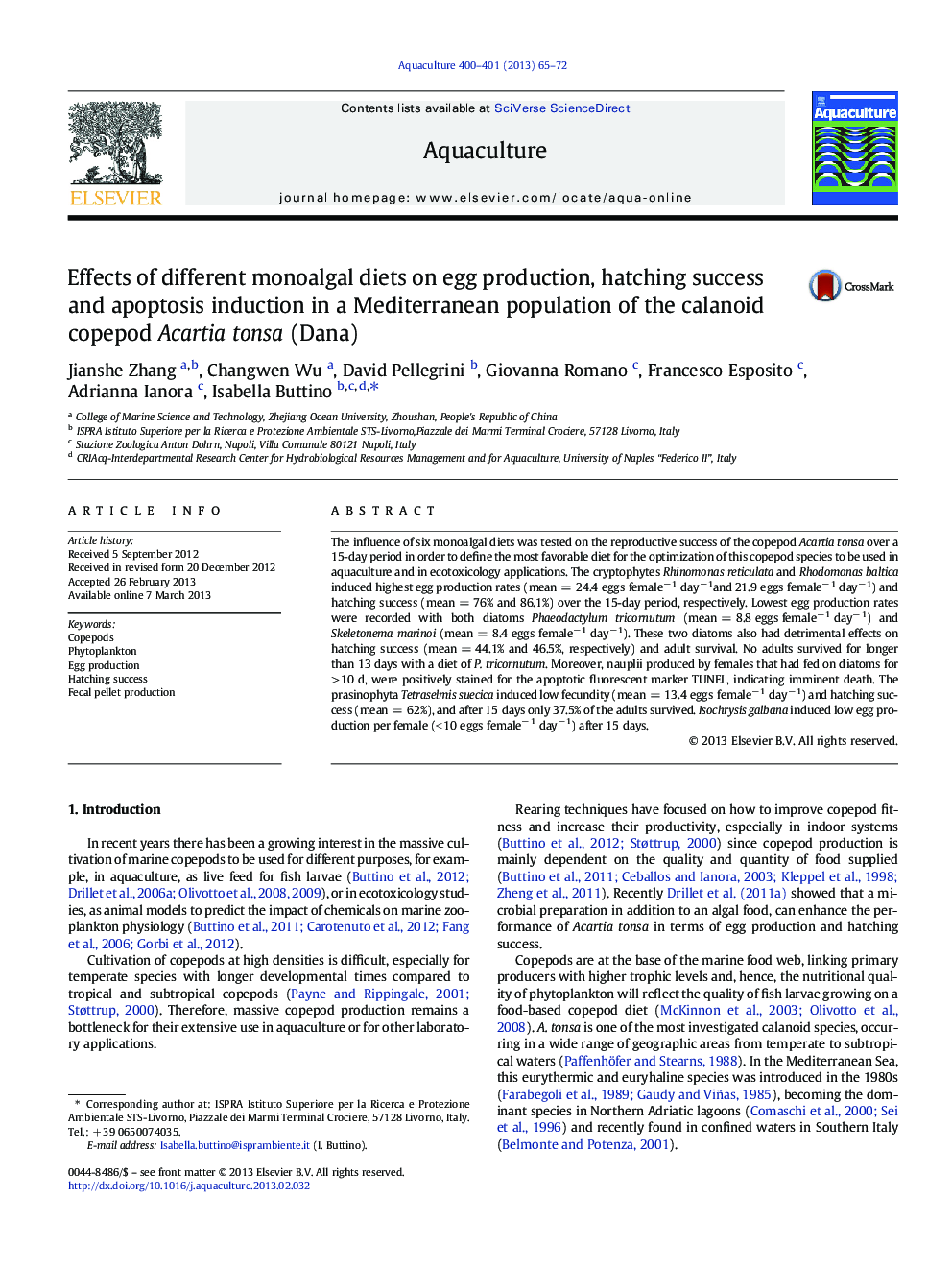| Article ID | Journal | Published Year | Pages | File Type |
|---|---|---|---|---|
| 2422144 | Aquaculture | 2013 | 8 Pages |
The influence of six monoalgal diets was tested on the reproductive success of the copepod Acartia tonsa over a 15-day period in order to define the most favorable diet for the optimization of this copepod species to be used in aquaculture and in ecotoxicology applications. The cryptophytes Rhinomonas reticulata and Rhodomonas baltica induced highest egg production rates (mean = 24.4 eggs female− 1 day− 1and 21.9 eggs female− 1 day− 1) and hatching success (mean = 76% and 86.1%) over the 15-day period, respectively. Lowest egg production rates were recorded with both diatoms Phaeodactylum tricornutum (mean = 8.8 eggs female− 1 day− 1) and Skeletonema marinoi (mean = 8.4 eggs female− 1 day− 1). These two diatoms also had detrimental effects on hatching success (mean = 44.1% and 46.5%, respectively) and adult survival. No adults survived for longer than 13 days with a diet of P. tricornutum. Moreover, nauplii produced by females that had fed on diatoms for > 10 d, were positively stained for the apoptotic fluorescent marker TUNEL, indicating imminent death. The prasinophyta Tetraselmis suecica induced low fecundity (mean = 13.4 eggs female− 1 day− 1) and hatching success (mean = 62%), and after 15 days only 37.5% of the adults survived. Isochrysis galbana induced low egg production per female (< 10 eggs female− 1 day− 1) after 15 days.
•We tested six monoalgal diets on reproductive success of the copepod Acartia tonsa;•Highest egg production rate was recorded with two cryptophytes;•Egg production, hatching success, and adult survival were reduced with two diatoms;•Apopotosis in newly hatched nauplii were recorded with two diatom diets;•Tetraselmis suecica induced low fecundity and hatching success but not apopotosis.
